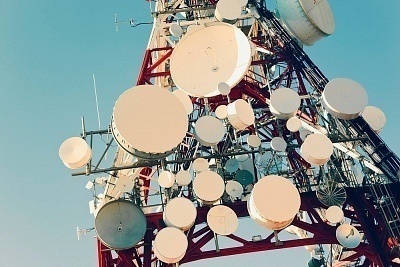Products Category
- FM Transmitter
- 0-50w 50w-1000w 2kw-10kw 10kw+
- TV Transmitter
- 0-50w 50-1kw 2kw-10kw
- FM Antenna
- TV Antenna
- Antenna Accessory
- Cable Connector Power Splitter Dummy Load
- RF Transistor
- Power Supply
- Audio Equipments
- DTV Front End Equipment
- Link System
- STL system Microwave Link system
- FM Radio
- Power Meter
- Other Products
- Special for Coronavirus
Products Tags
Fmuser Sites
- es.fmuser.net
- it.fmuser.net
- fr.fmuser.net
- de.fmuser.net
- af.fmuser.net ->Afrikaans
- sq.fmuser.net ->Albanian
- ar.fmuser.net ->Arabic
- hy.fmuser.net ->Armenian
- az.fmuser.net ->Azerbaijani
- eu.fmuser.net ->Basque
- be.fmuser.net ->Belarusian
- bg.fmuser.net ->Bulgarian
- ca.fmuser.net ->Catalan
- zh-CN.fmuser.net ->Chinese (Simplified)
- zh-TW.fmuser.net ->Chinese (Traditional)
- hr.fmuser.net ->Croatian
- cs.fmuser.net ->Czech
- da.fmuser.net ->Danish
- nl.fmuser.net ->Dutch
- et.fmuser.net ->Estonian
- tl.fmuser.net ->Filipino
- fi.fmuser.net ->Finnish
- fr.fmuser.net ->French
- gl.fmuser.net ->Galician
- ka.fmuser.net ->Georgian
- de.fmuser.net ->German
- el.fmuser.net ->Greek
- ht.fmuser.net ->Haitian Creole
- iw.fmuser.net ->Hebrew
- hi.fmuser.net ->Hindi
- hu.fmuser.net ->Hungarian
- is.fmuser.net ->Icelandic
- id.fmuser.net ->Indonesian
- ga.fmuser.net ->Irish
- it.fmuser.net ->Italian
- ja.fmuser.net ->Japanese
- ko.fmuser.net ->Korean
- lv.fmuser.net ->Latvian
- lt.fmuser.net ->Lithuanian
- mk.fmuser.net ->Macedonian
- ms.fmuser.net ->Malay
- mt.fmuser.net ->Maltese
- no.fmuser.net ->Norwegian
- fa.fmuser.net ->Persian
- pl.fmuser.net ->Polish
- pt.fmuser.net ->Portuguese
- ro.fmuser.net ->Romanian
- ru.fmuser.net ->Russian
- sr.fmuser.net ->Serbian
- sk.fmuser.net ->Slovak
- sl.fmuser.net ->Slovenian
- es.fmuser.net ->Spanish
- sw.fmuser.net ->Swahili
- sv.fmuser.net ->Swedish
- th.fmuser.net ->Thai
- tr.fmuser.net ->Turkish
- uk.fmuser.net ->Ukrainian
- ur.fmuser.net ->Urdu
- vi.fmuser.net ->Vietnamese
- cy.fmuser.net ->Welsh
- yi.fmuser.net ->Yiddish
How Television Broadcasting Works
While millions of people watch television each day, many of them are not quite sure how the technology works. Television has been around for many decades and although some of its components have changed over the years, the way in which television broadcasts work is pretty much the same.

Elements of Broadcast Television
1. Image Source
The image source can be defined as the program. It can be a movie, TV show, news program, etc. The image source is just the source’s video and does not include the sound. The image source is usually recorded on camera or flying spot scanner.
2. Sound Source
Once the image source is obtained, for e.g. a video of a movie, sound is needed to complete the medium. The sound source is the TV program’s audio signal, whether coming from a movie, TV show, news program, etc. It can come in the form of mono, stereo, or even digitally processed surround sound.
3. Transmitter
A transmitter is what sends both audio and video signals over the air waves. Transmitters usually transmit more than one signal (TV channel) at a time. A transmitter modulates both picture and sound into one signal then sends this transmission over a wide range for a receiver (TV set) to receive.
4. Receiver
A receiver (TV set) receives the transmitted signals (TV programs) and turns radio waves, which include audio and video signals, into useful signals that can be processed into an image and sound.
5. Display Device
This is either a TV set or monitor. A display device has the technology to turn the electrical signals received into visible light. On a standard TV set, this includes the CRT (Cathode Ray Tube) technology.
6. Sound Device
The sound devices are usually speakers that are either built into the TV set or that accompany the TV set and turn electrical signals into sound waves to play audio along with the video images.
Broadcast Television Signals
All TV sets have the ability to switch the receiver’s tuner to pick up specific channels. Each channel is transmitted on its own frequency, which the TV set can tune into and receive.
Broadcast TV vs. Satellite TV and Cable TV
There are three main ways to receive TV programming, one is through broadcast television and the other two are through satellite and cable TV.
1. Broadcast TV
Broadcast TV is when audio and video signals are transmitted over the air waves from a ground based transmitter. These signals are usually picked up for free and are on specific frequency spectra.
2. Satellite TV
Satellite TV is usually a digital TV signal that is broadcast from a satellite orbiting the earth. They are usually pay services that require special equipment to receive programming and operate on special frequencies.
3. Cable TV
Cable TV is a pay TV service that sends out signals not over the air, but through cable that runs from the cable company to the viewer’s home. Many cable types, from copper to fiber optic cables, are used. The signal can be analog or digital.
Television Transmission Bands
Television is transmitted on various bands or frequencies. Transmission bands vary by country. In America, bands III to V are used, which include VHF and UHF signals.
1. Band I
It is important to note that lower band signals such as bands I do not have enough bandwidth, which means they cannot carry much information.
2. Band II
Band II in America is what carries FM radio. While this band is able to carry an audio signal, adding video to the signal would overcrowd it and it would be inferior to the signal that viewers receive today.
3. Bands III , IV, and V
A Normal TV signal is located on Band III, IV, or V. Usually, these bands require bandwidth to carry both audio and video signals. Most TV signals have about 4MHz of bandwidth for the video portion, when the signal’s sound portion is added the signal will have a total of about 6 MHz. The FCC has allocated each TV channel to a bandwidth of 6 MHz. The channels are as followed:
* Band III – Channels 2 to 6 (54 to 88 MHz)
* Band IV – Channels 7 to 13 (174-216 MHz)
* Band V – Channels 14 to 83 (470 to 890 MHz)
VHF and UHF
VHFs (very high frequencies) are channels that usually include channels 2 to 13. UHFs (ultra high frequencies) are channels that usually include channels 14 to 83.
Both VHF and UHF are great frequencies for carrying TV signals (both audio and video). They have a long range and can penetrate structures such as walls.
Higher Bands
These bands are much higher in frequency and behave like light waves instead of radio waves. Structures usually obstruct these bands and they need a clear line of sight. Many satellite signals can use these frequencies, but require special equipment.
Maybe you will like:
1. How to Apply for a Radio or Television Broadcast Station
2. How to Connect a TV Antenna and Cable to a Television





